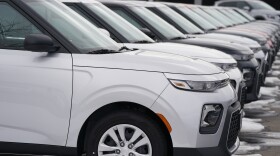With a HOLO card in hand, in two weeks, the public will begin riding the driverless Honolulu rail, Skyline.
The trains, which are about the length of a football field, take about a minute and 10 seconds to walk from one end to the other.
Jason Lurz, director of operations and maintenance for Hitachi, said the open architecture featured there is one of the first in the country.
"You can walk from one end to the other without having to open the door, that's good for convenience," Lurz said. "Also, it allows more of an open feel and allows us to have more visibility also with our camera system."

Trains and stations are monitored from a 43-acre site in Pearl City, which hosts an Operations Control Center staffed 24/7. From there, about 1,500 cameras cover everything from the parking structures, entrances and every level of the station. Other displays show every train and route.
"There are thousands of alarms on board the cars, on all of the wayside equipment out there on the system that is constantly being monitored, both from a systems perspective and from a human perspective," the city's Director of Rapid Transit Patrick Preusser said Thursday.
On Thursday, Hitachi and the city's Department of Transportation Services led a tour of the rail’s operations center in Pearl City to discuss safety.
Security is tiered in three levels, heightening in response. Level one responses would be station or train operators; the second level is contracted security; and the third is law enforcement.
"Anytime there is an alarm, folks are responding, troubleshooting and communicating that out to the field," Preusser said. "In some cases, it requires human intervention to reset something, to troubleshoot or repair."
Information and security call boxes feed into this room, and transit workers can watch everything happening in the vicinity of the caller.

Leading this section is J.R. Corino, the rail's control center manager.
"We're primarily observing and monitoring the situation and then communicating with our field staff and our level two security to get somebody hands-on as quick as possible so that they can intervene if need be," Corino said.
Should extreme weather or a power outage strike, the control center has backup generators. Trains will also stop running at certain wind speeds with notice to riders.
"In the event, we had a power failure of some sort, the backup generators would automatically kick on and it would allow the trains to move at a slow speed into the next station so that everybody can get off and evacuate at a station in itself for the for the ride," Corino said.
Corino, who is still a member of the Hawaiʻi Air National Guard as an air traffic controller, said the skills translate, and many former air traffic controllers have become station operators or information controllers for the Honolulu rail.
As of last week, the first 10.75-mile segment from Kapolei to Halawa and several trains were transferred over to the city for ownership.
The rail is set to open on June 30.





